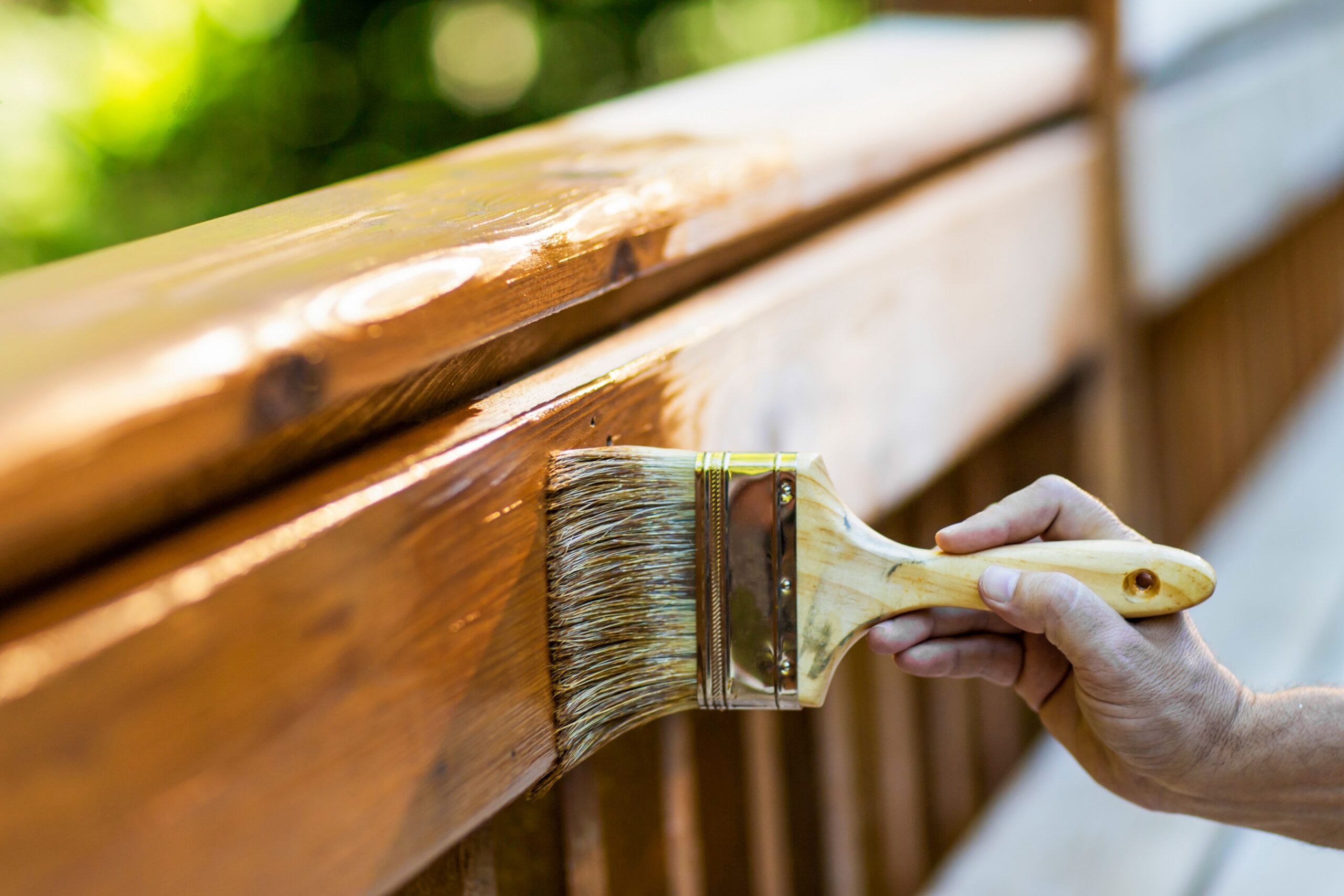Is your pressure-treated deck taking on an insipid grey hue? Pressure-treated wood is as susceptible to damage from the sun, rain, and other outdoor elements as non-treated wood. But you can prevent that from happening.
Staining pressure-treated lumber prevents cracks and splits caused by seasonal changes, prolongs its life, and preserves its natural beauty. Enhance the appearance of your deck, fence, picnic table, or other exterior wood structure by adding fade-resistant color for a finished look you’ll enjoy for years.
Can you stain any pressure-treated lumber?
Pressure-treated lumber contains chemicals that prevent insect infestation and rot. It’s also infused with various preservatives like micronized copper to withstand the elements longer than non-treated lumber. This process uses water to force the chemicals deep into the wood’s pores. Therefore, new pressure-treated lumber has high moisture content and won’t immediately accept a stain. This means if you are in the market to buy pressure-treated lumber (or have just bought some), you will have to wait several weeks for it to dry out before you can stain it.
One way to sidestep the waiting period is to purchase lumber with a stamp or tag that says ADAT (air-dried after treatment) or KDAT (kiln-dried after treatment). This certifies that the wood has been dried in a kiln after the pressure treatment so that you can stain it immediately.
As for pressure-treated wood that you’ve had for a while, try this trick. To tell if the wood is dry enough to stain, sprinkle water on it. If water beads on the surface, you’ll know that the wood won’t take the stain well. (And if you go ahead and stain it anyway, the finish won’t last as long as it should.) On the other hand, if the wood absorbs the water from the sprinkle test within 10 minutes, it is ready to stain.
Select the right stain
There are a few things to consider when choosing the best stain for your pressure-treated lumber project. Deck and fence finishes are either water- or oil-based or a hybrid of the two. Oil-based stains penetrate deeper and last longer than water-based stains. But many homeowners prefer water-based stains for easy clean-up. For the best of both worlds, consider a hybrid stain that penetrates deep, has long-lasting color, and cleans up with just soap and water.
It’s also a good idea to use a stain that contains a water repellant and a UV stabilizer on any outdoor projects. Whether you choose a transparent, semi-transparent, or solid color stain depends on what you want the finished product to look like. Here’s what to expect from each type of stain:
- A transparent stain is a clear sealer with no color.
- A semi-transparent stain has some color, offers UV protection, and allows the beauty of the wood’s grain to show through.
- Solid color stains offer the most UV protection but don’t penetrate the wood, leaving a surface film that may peel over time.
Do some prep work
You want to prepare the surface once you’ve chosen the perfect stain for your outdoor structure. New lumber that passes the sprinkle test above can be stained immediately, without any prep work. (But be sure the test area is dry first.) Older lumber will need to be cleaned and dried before proceeding. Also, cover any skin you wouldn’t want stained and wear eye protection. Always work in a well-ventilated area, and protect the surrounding vegetation with plastic sheeting.
- Use a stiff brush to remove all loose dirt and debris.
- Next, use your brush to scrub the wood with the following deck cleaning solution: 1 gallon of water, 1-pint rubbing alcohol, and 1-quart oxygen bleach (like OxyClean)
- For surfaces heavily soiled with mold, mildew, or other stains, use a commercial cleaner or restorer and follow the manufacturer’s directions.
- Rinse well with clean water.
- For painted or varnished wood, remove the paint using a wood stripper before staining.
- Allow wood to dry completely before applying the stain.
Apply stain properly
Once the pressure-treated surface is clean and dry, you’re ready to apply the stain. But before you get started, check the weather forecast. You’ll want a cool day in the 50-degree range with no rain for the next 24 to 48 hours. And because stain dries quickly, it’s smart to avoid applying it in direct sunlight.
Protect surrounding vegetation with plastic sheeting and cover areas you don’t want to stain with painter’s tape.
- Thoroughly stir the stain and pour a small amount into a paint tray. Occasionally stir as you work.
- Dab a little of the stain on a corner or the underside of a board to make sure you like the color before proceeding.
- To apply the stain to large flat areas, use a paint pad applicator.
- Use a paintbrush to fill the gaps between the boards and other hard-to-reach places.
- The butted ends of the boards will take more stain.
- For a uniform result, avoid overlapping the brushstrokes.
- If you’re painting a fence, deck railing, or other vertical surfaces, start at the top and work your way down.
- For new lumber, stain the unexposed sides before screwing them in place.
- Allow the stain to dry for at least 24 hours.
Adding color to your fence or deck doesn’t just enhance the beauty of your backyard landscape; it prolongs the life of the structure. Follow these simple steps to protect your outdoor living space from aging, and you’ll enjoy it much longer than you thought possible.

